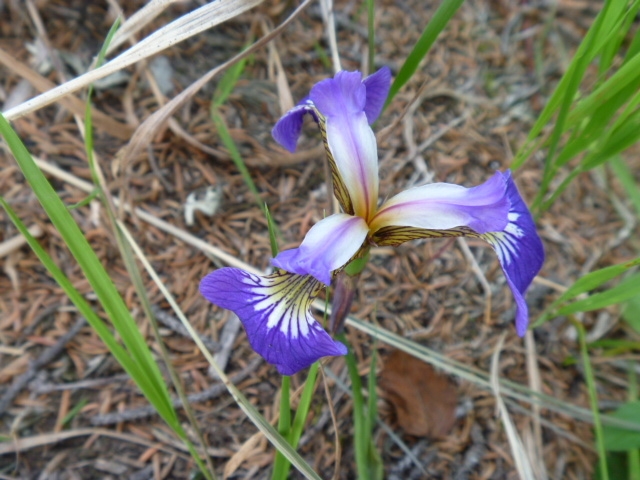Bristle-Pointed Iris
(Iris setosa)
Bristle-Pointed Iris (Iris setosa)
/
/

Bruce Calvert
CC BY 4.0
Image By:
Bruce Calvert
Recorded By:
Copyright:
CC BY 4.0
Copyright Notice:
Photo by: Bruce Calvert | License Type: CC BY 4.0 | License URL: http://creativecommons.org/licenses/by/4.0/ | Rights Holder: Bruce Calvert | Publisher: iNaturalist | Date Created: 2017-07-12T17:09:57-07:00 |

























Estimated Native Range
Summary
Iris setosa, commonly known as the bristle-pointed iris or beachhead iris, is a rhizomatous perennial herb native to cool temperate and subarctic regions. It is found in a variety of wetland habitats including bogs, wet meadows, riverbanks, and coastal areas in Alaska, Canada, Russia, northeastern Asia, China, Korea, and Japan. This species typically grows to a height of 12 to 24 inches (30 to 60 cm) with a similar spread. The bristle-pointed iris is characterized by its striking violet to blue flowers, each with three drooping petals and three upright, smaller petals called standards. The flowers are showy and bloom from June to July, set against a backdrop of mid-green, lanceolate leaves that add texture to garden settings.
The bristle-pointed iris is valued for its hardiness and the vibrant splash of color it provides when in bloom. It is an excellent choice for water gardens, bog gardens, and borders, particularly in naturalistic plantings. It thrives in moist to wet soils and can tolerate standing water, making it suitable for pond edges and other wet areas. While it prefers full sun, it can also tolerate partial shade. Gardeners should be aware that although it is not typically invasive, it can spread via rhizomes and may require division every few years to maintain vigor. Iris setosa has also been used historically for creating dyes and in traditional medicine, though these uses are less common today.CC BY-SA 4.0
The bristle-pointed iris is valued for its hardiness and the vibrant splash of color it provides when in bloom. It is an excellent choice for water gardens, bog gardens, and borders, particularly in naturalistic plantings. It thrives in moist to wet soils and can tolerate standing water, making it suitable for pond edges and other wet areas. While it prefers full sun, it can also tolerate partial shade. Gardeners should be aware that although it is not typically invasive, it can spread via rhizomes and may require division every few years to maintain vigor. Iris setosa has also been used historically for creating dyes and in traditional medicine, though these uses are less common today.CC BY-SA 4.0
Plant Description
- Plant Type: Bulbs
- Height: 1-2 feet
- Width: 0.5-1 feet
- Growth Rate: Moderate
- Flower Color: Blue, Purple, White
- Flowering Season: Spring, Summer
- Leaf Retention: Deciduous
Growth Requirements
- Sun: Full Sun, Part Shade
- Water: Medium, High
- Drainage: Fast, Medium, Slow
Common Uses
Bee Garden, Bird Garden, Border Plant, Butterfly Garden, Deer Resistant, Erosion Control, Low Maintenance, Potted Plant, Rabbit Resistant, Water Garden
Natural Habitat
Cool temperate and subarctic wetland habitats including bogs, wet meadows, riverbanks, and coastal areas
Other Names
Common Names: Beachhead Iris , Wild Flag , Arctic Blue Flag , Arctic Iris , Mountain Iris , Beach Iris , Shan Yuan Wei
Scientific Names: Iris setosa , Limniris setosa , Xyridion setosum
GBIF Accepted Name: